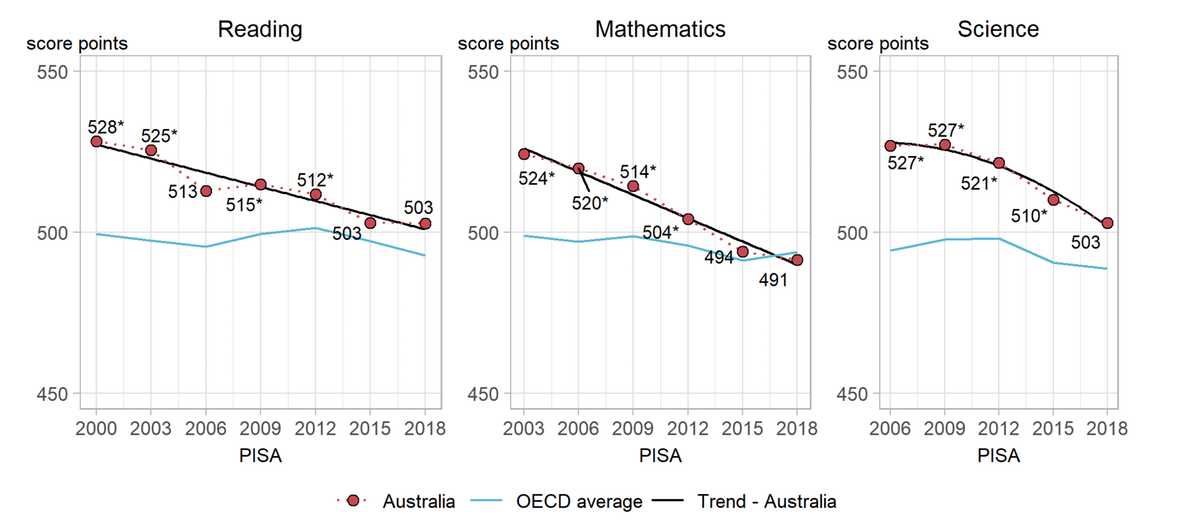

The goal of learningtower is to provide a user-friendly
R package to provide easy access to a subset of variables from PISA data
collected from the OECD.
Version 1.1.0 of this package provides the data for the years 2000 -
2022. The survey data is published every three years. This is an
excellent real world dataset for data exploring, data visualising and
statistical computations.

The Programme for International Student Assessment (PISA) is an international assessment measuring student performance in reading, mathematical and scientific literacy.
PISA assesses the extent to which 15-year-old students have acquired some of the knowledge and skills that are essential for full participation in society, and how well they are prepared for lifelong learning in the areas of reading, mathematical and scientific literacy.
In 2022, PISA involved 79 countries and 600,000+ students worldwide.
Read more about the Programme here.
You can install the learningtower package from CRAN with:
install.packages("learningtower")To install the development version of learningtower from
GitHub use:
devtools::install_github("kevinwang09/learningtower")The learningtower gives access to a subset of variables
from PISA data originally collected and are available from OECD, collected on a three
year basis.
The learningtower package contains mainly three
datasets:
studentschoolcountrycodeThis provides us with information about the students scores in mathematics, reading and science, their school details, and which country they are from. The data provided in this package is a cleaned version of the full published PISA organisation, with reproducible code available in this repository.
The number of entries for the student and
school data are shown below.
| Year | Number of Students | Number of Schools |
|---|---|---|
| 2000 | 127,236 | 8,526 |
| 2003 | 276,165 | 10,274 |
| 2006 | 398,750 | 14,365 |
| 2009 | 515,958 | 18,641 |
| 2012 | 480,174 | 18,139 |
| 2015 | 519,334 | 17,908 |
| 2018 | 612,004 | 21,903 |
| 2022 | 613,744 | 21,629 |
The student dataset comprises of the scores from the
triennial testing of 15-year-olds worldwide. In addition, this dataset
contains interesting information on their parents qualifications, family
wealth, gender, and possession of computers, internet, cars, books,
rooms, desks, and similar other variables.
The full dataset is approximately 50MB in size, which is much larger
than the CRAN’s allowed package size limit. As the result, the package
itself only includes a random 50 rows from the 38 OECD
countries, for each of the survey years.
i.e. student_subset_2000, student_subset_2003
etc.
The student subset dataset can be loaded easily. See
?student for detailed information on the measured
variables.
library(learningtower)
data(student_subset_2018)
dim(student_subset_2018)
#> [1] 1900 22The entire student data can be downloaded using the
load_student function.
#load the entire student data for a single year
student_data_2018 <- load_student(2018)
#load the entire student data for two of the years (2012, 2018)
student_data_2012_2018 <- load_student(c(2012, 2018))
#load the entire student data
student_data_all <- load_student("all")Note that because of changing data specification over the survery years, not all variables were measured consistently across the years.

The school dataset comprises school weight and other
information such as the funding distribution of the schools, whether the
school is private or public, the enrollment of boys and girls, the
school size, and similar other characteristics of interest of different
schools these 15-year-olds attend throughout the world.
# loading the school data
data(school)See ?school for more information on the different
variables present in the the school dataset.

The countrycode dataset contains mapping of the country ISO code to the country name. More information on the participating countries can be found here.
# loading the countrycode data
data(countrycode)
head(countrycode)
#> # A tibble: 6 × 2
#> country country_name
#> <chr> <chr>
#> 1 AZE Azerbaijan
#> 2 ARG Argentina
#> 3 AUS Australia
#> 4 AUT Austria
#> 5 BEL Belgium
#> 6 BRA Brazilcountrycode are countries.
For example, “QCN” refers to “Shanghai-China”.
student_subset_yyyy data has all 38 OECD countries.See ?countrycode for more detailed information on the
countries that participated in the PISA experiment.
In the plot shown below, shows the weighted mean of mathematics scores of these 15 year old students for a few selected countries over the available years.

Similarly, you can find more code examples and data
visualizations for exploring learningtower through our
vignettes and articles
Further data exploration can be found in our articles exploring temporal trends here.
To cite the learningtower package, please use:
citation("learningtower")
#> To cite package 'learningtower' in publications use:
#>
#> Wang K, Yacobellis P, Siregar E, Romanes S, Fitter K, Dalla Riva G,
#> Cook D, Tierney N, Dingorkar P, Sai Subramanian S, Chen G (2024).
#> _learningtower: OECD PISA Datasets from 2000-2022 in an Easy-to-Use
#> Format_. R package version 1.1.0,
#> https://github.com/kevinwang09/learningtower,
#> <https://kevinwang09.github.io/learningtower/>.
#>
#> A BibTeX entry for LaTeX users is
#>
#> @Manual{,
#> title = {learningtower: OECD PISA Datasets from 2000-2022 in an Easy-to-Use Format},
#> author = {Kevin Wang and Paul Yacobellis and Erika Siregar and Sarah Romanes and Kim Fitter and Giulio Valentino {Dalla Riva} and Dianne Cook and Nick Tierney and Priya Dingorkar and Shabarish {Sai Subramanian} and Guan Ru Chen},
#> note = {R package version 1.1.0, https://github.com/kevinwang09/learningtower},
#> url = {https://kevinwang09.github.io/learningtower/},
#> year = {2024},
#> }learningtower

Australia’s neighbours, New Zealand and Indonesia, are also worrying: New Zealand top-end in OECD’s latest PISA report but drop in achievements ‘worrying’, Not even mediocre? Indonesian students score low in math, reading, science: PISA report.
The data from this survey and all of the surveys conducted since
the first collection in 2000, is publicly available. We decided to have
made a more convenient subset of the data available in a new R package,
called learningtower
The work to make the data available is the effort of several researchers from Australia, New Zealand and Indonesia, conducted as part of the ROpenSci OzUnconf held in Sydney, Dec 11-13, 2019.